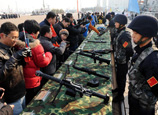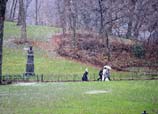
According to the circular, local governments should establish a special office for the management of state-protected cultural heritage sites that are listed as tourist attractions.
Administrative organizations for historical sites and buildings that are vulnerable to damage should cap the maximum number of tourists they receive. Suggestions include staggering visiting hours and approving visits by appointment.
In addition, the circular included detailed requirements for the approval of cultural relic-related tourism projects, increasing investment in the protection of cultural relics and strengthening supervision over related travel.
A draft law on tourism tabled at the ongoing bimonthly session of the country's top legislature echoes the circular by stipulating that sites should advertise the maximum number of visitors they can handle and take measures to control the flow of tourists.















 China sends first oceangoing patrol vessel to South China Sea
China sends first oceangoing patrol vessel to South China Sea


![]()
